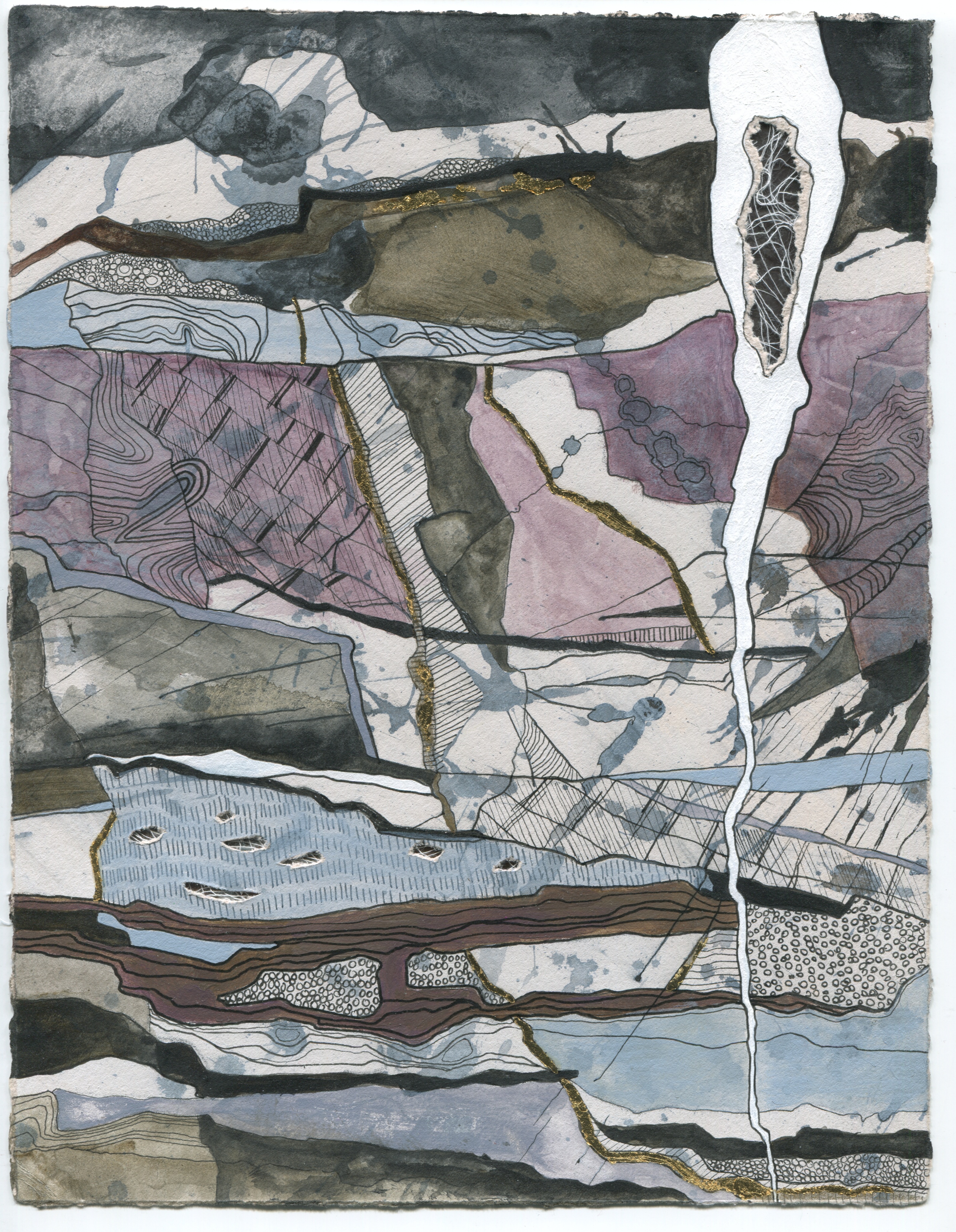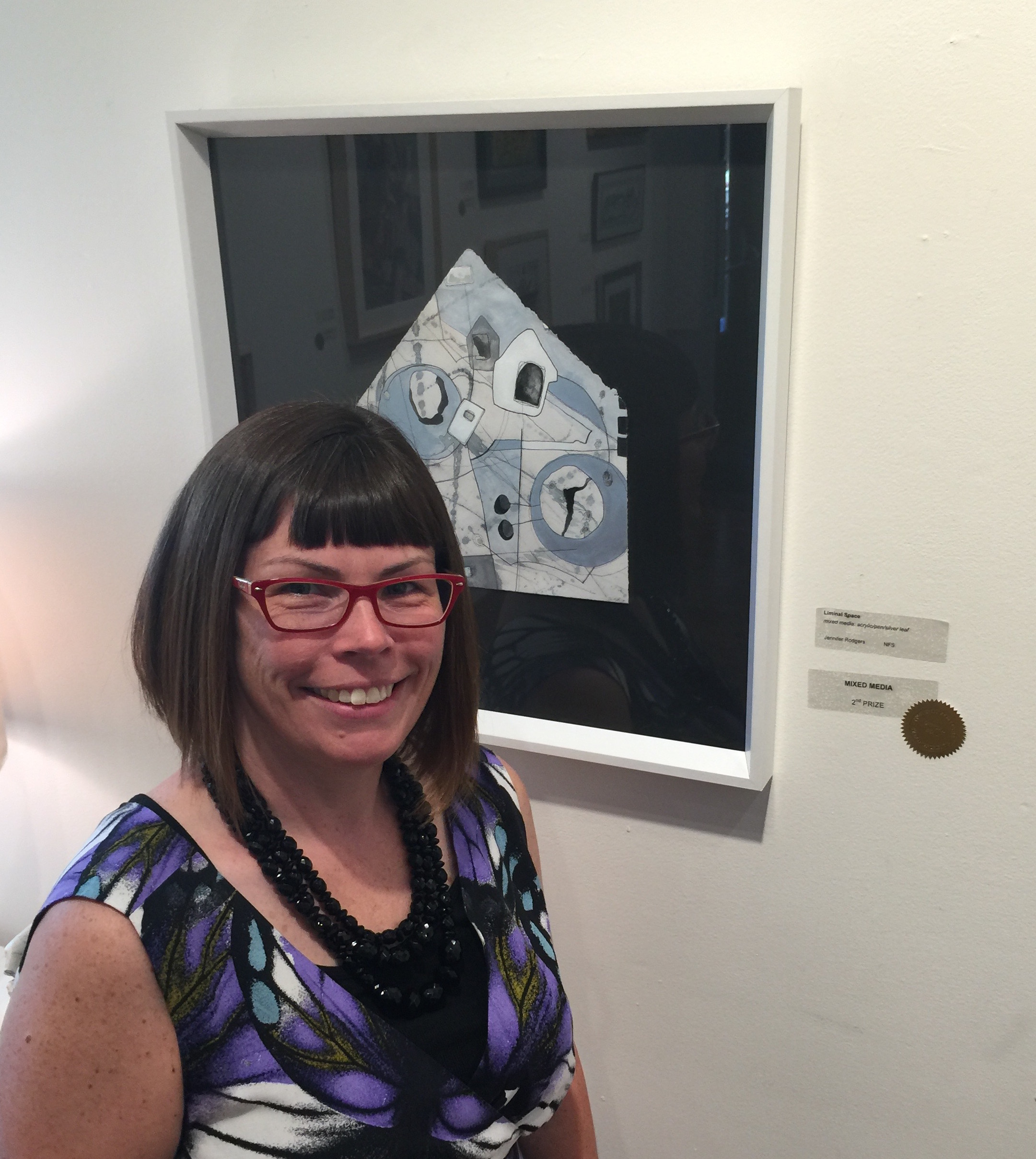See a Rare Visualization of Grief in the Art of Jennifer Rodgers
People deal with the loss of a loved one in a myriad of ways. Some throw themselves into physical activity, others temporarily isolate themselves or participate in a support group. While it’s important to take care of yourself physically, emotionally, and spiritually as you work through the grief process, there’s really no “right” way to do so.
When Jennifer Rodgers lost her dad to sepsis in 2014, she channeled her grief into art–something that was already an integral part of the Philadelphia high school art teacher’s world. According to SevenPonds, a blog about embracing the end-of-life experience, Rodgers started creating pieces of art she called “maps” as she walked through her grief.
The geography of loss
Rodgers’ inspiration for her grief maps was author Patti Digh’s Geography of Loss. The book likens the moment of loss to the center of a compass and uses map imagery to illustrate the journey of finding your way through a landscape that has been altered by the death of a loved one.
“A map organizes a place in a certain way and we use them to get us from one point to the next,” Rodgers told NPR in 2015. “My maps have become a way to get from a point in my life where I was very much grieving to another point where I came to a resolution with some of it.”
Her maps are multi-dimensional representations of memories, moments, and amalgams of geographical and emotional elements. For example, Rodgers explains in her blog that the rivers and lakes depicted in You Are Here Now “delineate tears shed over the course of my life” while “highways became a way to represent how fast life seems to move.”
(Annealing) Strata of Memories, a piece that pays homage to her father, his 200+ days of hospitalization, and his subsequent death, was inspired by kintsugi, a Japanese art described in Digh’s book. Rather than throwing away a broken plate or cup, kintsugi was used to rejoin and repair the pieces with gold–a color that Rodgers intentionally included in the piece. Strata rejoins the broken pieces of Rodgers’ life, portraying the events that have “rocked me to my core,” she writes. Her father’s shape transcends each of the layers in the work. Rodgers used gauze to layer his figure to “represent how intertwined we all are as humans, as parent and child” and alsol as a literal reference to her father’s wound care. Seven small holes cut into the paper represent each month of his hospitalization.

Mapping as therapy
Using geographic terminology to illustrate the journey of grief isn’t a new concept, but interpretations and expressions of grief mapping vary widely, from activities for children experiencing loss to a scientific studies of the “spatial dimensions of bereavement, mourning and remembrance.”
The New York Life Foundation, through a partnership with Scholastic, created a grief mapping exercise for students in grades six through 12 as part of a larger collection of guidance and support resources. The activity encourages children to draw three to five locations that represent emotional and behavioral changes that a grieving person may experience, events or moments that trigger memories of a lost loved one, and experiences that may help the grieving person heal. Children are asked to consider colors, weather, and geographic features to represent emotions and behavior.
Other interpretations are more analytical in nature. Sheila Clark’s grief map, for example, is a simple chart using stark mountain-like triangles to represent phenomena encountered during a three-part timeline of grief: loss/unreality, survival, and reorganization/new life.
Rodgers still finds it difficult to talk about her grief maps, but still finds them healing. “I don’t know any other way to get through what became the most challenging time in my life,” she told NPR. “I didn’t know any other way than to make art about it.”





